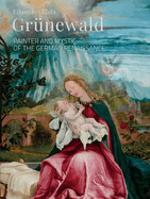The German painter Matthias Grunewald (c. 1480 1528) has remained one of the most enigmatic figures of the Renaissance, his artistic identity defined by stylistic complexity and historical obscurity. In this study, Edoardo Villata reexamines Grunewald’s oeuvre through a critical reassessment of sources, stylistic developments, and the broader network of artistic influences. Moving beyond established interpretations, Villata explores the relationship between documentary research and comparative analysis, situating Grunewald within the artistic and intellectual landscape of his time. By integrating stylistic analysis, documentary research, and an expansive perspective that extends beyond painting to sculpture and religious thought (two of the most relevant results are the discovery of the role of the sculptor Tilman Riemenschneider for his training and of Johann von Staupitz, Luther’s mentor, for the iconography of the Isenheim Altarpiece), Villata reassesses Grunewald’s possible connections to contemporary artistic centres, offering a new reading of his production and its historical significance.

Grunewald: painter and mystic of the German renaissance
ISBN: 9788833673349
Format: Paperback
Publisher: Officina Libraria
Origin: GB
Release Date: December, 2025
157637

